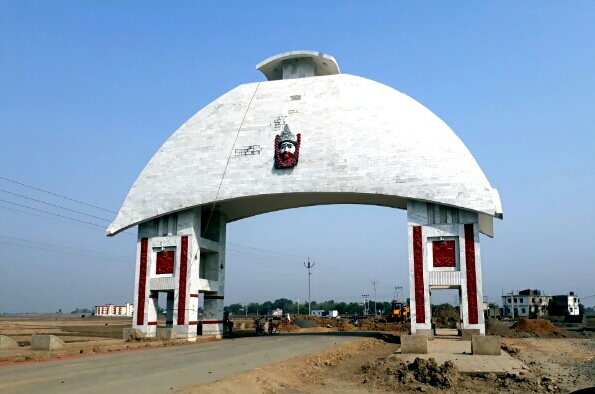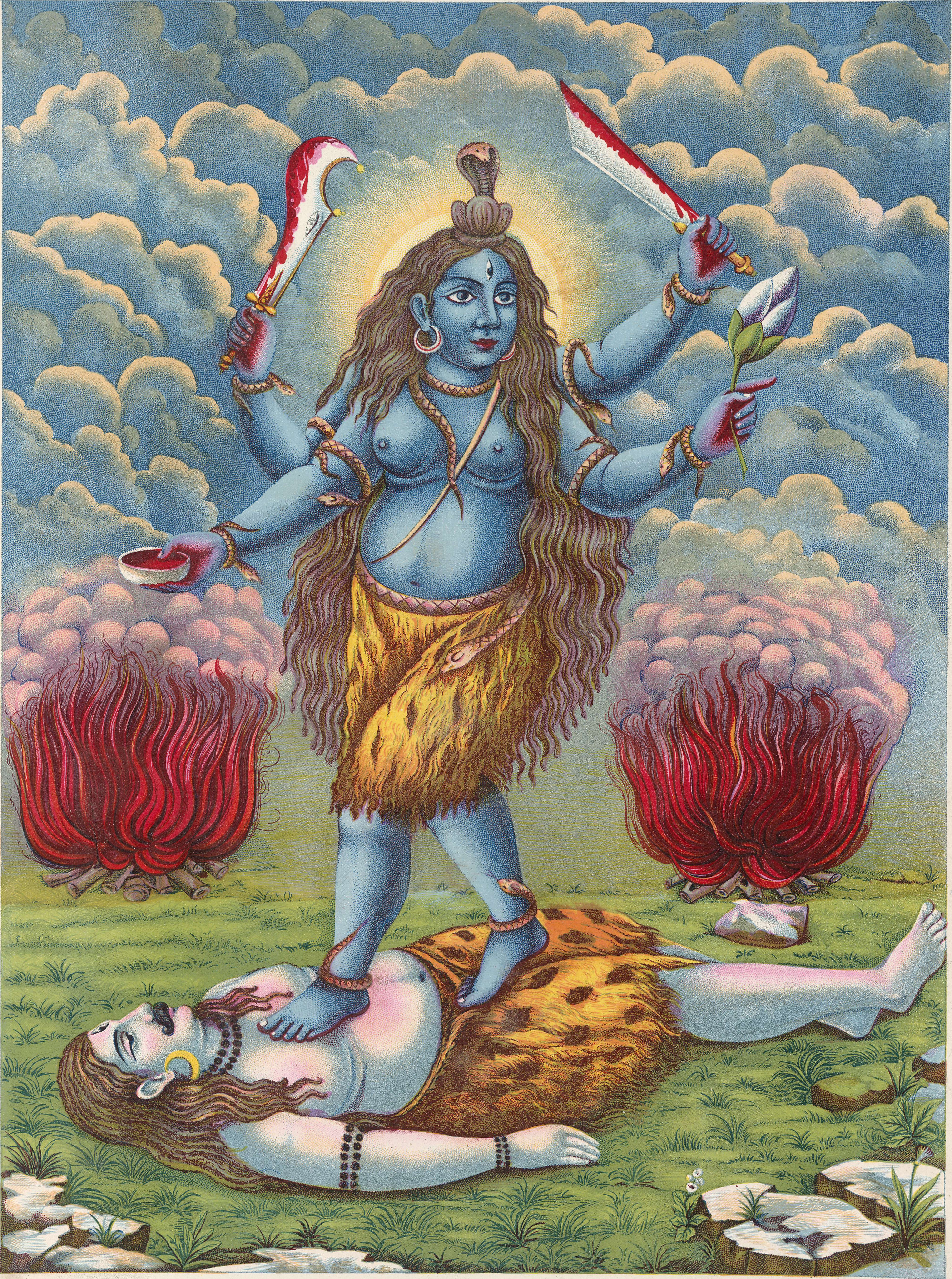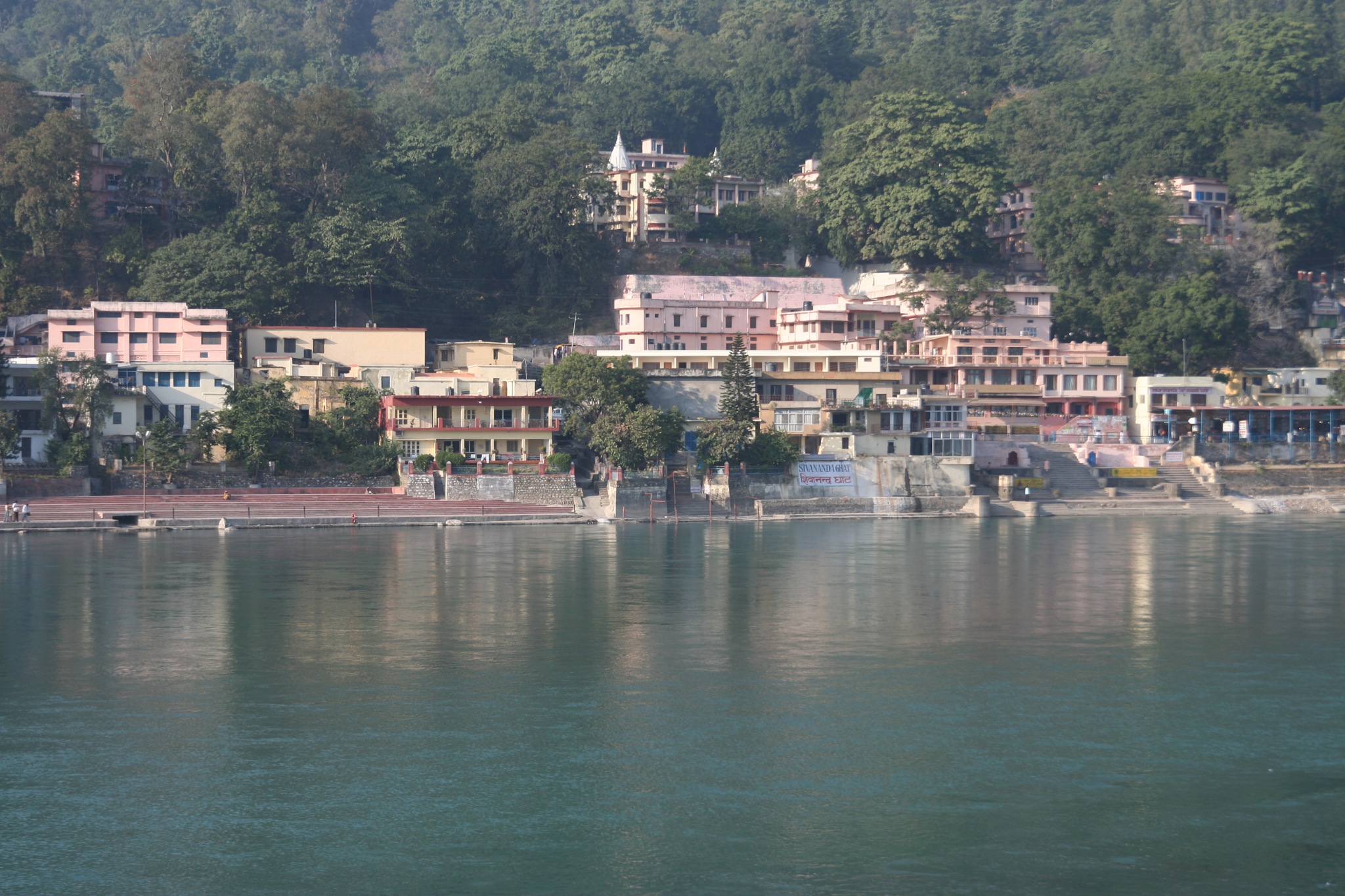|
Tarapith
Tarapith is a 13-century Hindu temple in Chandipur village Rampurhat II CD block in Rampurhat subdivision of Birbhum district of the Indian state of West Bengal, known for its Tantric temple and its adjoining cremation (Maha Shmashan) grounds where sādhanā (tantric rituals) are performed. The Tantric Hindu temple is dedicated to the goddess Tara, a fearsome Tantric aspect of the Devi, the chief temples of Shaktism. Tarapith derives its name from its association as the most important centre of Tara worship. Tarapith is also famous for Sadhak Bamakhepa, known as the avadhuta or "mad saint", who worshipped in the temple and resided in the cremation grounds as a mendicant and practised and perfected yoga and the tantric arts under the tutelage of another famous saint, Kailashpathi Baba. Bamakhepa dedicated his entire life to the worship of Tara Maa. His ashram is also located in bank of Dwaraka river and close to the Tara temple. Geography Tarapith is a village of Saha ... [...More Info...] [...Related Items...] OR: [Wikipedia] [Google] [Baidu] |
Rampurhat II
Rampurhat II is a community development block that forms an administrative division in Rampurhat subdivision of Birbhum district in the Indian state of West Bengal. Overview Birbhum district is physiographically a part of the ancient Rarh region. The western portion of the district is basically an extension of the Chota Nagpur Plateau. The area has mostly loose reddish lateritic low fertility soil. In the east, the flood plains of the major rivers, such as the Ajay, Bakreshwar, Mayurakshi and Brahmani, have soft alluvial soil. The forest cover is only 3.5% of the total district. Although coal is found in the district and Bakreshwar Thermal Power Station has a capacity of 2,010 MW, the economic condition of Birbhum is dominated by agriculture. From 1977 onwards major land reforms took place in West Bengal. Land in excess of land ceiling was acquired and distributed amongst the peasants. In Birbhum district, 19,968 hectares of vested agricultural land has been distributed amongs ... [...More Info...] [...Related Items...] OR: [Wikipedia] [Google] [Baidu] |
Bamakhepa
Bamakhyapa ( bn, বামাখ্যাপা, Bamakhæpa, mad saint; 1837–1911Kinsely, p. 111), born Bamacharan Chattopadhyay, was an Indian Hindu saint who is held in great reverence in Tarapith and whose shrine is also located in the vicinity of the Tara temple in Birbhum. He worshipped Maa Tara as if she was his own mother. He was born at Atla village in Rampurhat subdivision of Birbhum district. Worship Bamakhaypa, goddess Tara's ardent devotee lived near the temple and meditated in the cremation grounds. He was a contemporary of famous Bengali saints like Ramakrishna Paramhamsa and Vishuddhanand Paramhamsa from Gyanganj or Siddhashram who established Navmundi Asan at Kashi. At a young age, he left his house and came under the tutelage of a saint named Swami Makshadananda, who lived in a village name Dakshingram, in Birbhum district. Later he relocated to maluti, an old temple village on the banks of Dwarka River. He stayed in Mouliksha temple for continuing ... [...More Info...] [...Related Items...] OR: [Wikipedia] [Google] [Baidu] |
Rampurhat
Rampurhat is a city and a municipality in Birbhum district in the Indian state of West Bengal. It is the headquarters of the Rampurhat subdivision. According to Census 2011 Rampurhat is the third most populous city in Birbhum district and 82nd most populous city in West Bengal. Rampurhat is a rapidly growing township It is near the West Bengal / Jharkhand border. Rampuhat is an important city of Birbhum district as it has dynamic connectivity with the other places of West Bengal and neighboring states via state highways, national highway and rail route. Rampurhat Junction is one of the busiest railway stations in eastern India. Geography Location Rampurhat is located at 24.17 North and 87.78 East. Police station Rampurhat police station has jurisdiction over Rampurhat municipality and Rampurhat I CD Block. CD block HQ The headquarters of Rampurhat I CD block are located at Rampurhat. Overview The northern portion of Rampurhat subdivision (shown in the map alongside) i ... [...More Info...] [...Related Items...] OR: [Wikipedia] [Google] [Baidu] |
Rampurhat Subdivision
Rampurhat subdivision is an administrative subdivision of Birbhum district in the state of West Bengal, India. Overview The northern portion of Rampurhat subdivision is part of the Nalhati Plains, a sub-micro physiographic region, and the southern portion is part of the Brahmani-Mayurakshi Basin, another sub-micro physiographic region occupying the area between the Brahmani in the north and the Mayurakshi in the south. There is an occasional intrusion of Rajmahal Hills, from adjoining Santhal Parganas, towards the north-western part of the subdivision. Geography Subdivisions Birbhum district is divided into the following administrative subdivisions: Administrative units Rampurhat subdivision has 5 police stations, 8 community development blocks, 8 panchayat samitis, 65 gram panchayats, 760 mouzas, 725 inhabited villages, 2 municipalities and 6 census towns. The municipalities are: Rampurhat and Nalhati. The census towns are: Murarai, Barua Gopalpur, Ambhua, Kashimnag ... [...More Info...] [...Related Items...] OR: [Wikipedia] [Google] [Baidu] |
Tara (Devi)
In Hinduism, the goddess Tara ( sa, तारा, ) is the second of the Dasa (ten) Mahavidyas or "''Great Wisdom goddesses''", and is a form of Adishakti, the tantric manifestation of Parvati. Her most famous centre of worship is the temple and the cremation ground of Tarapith in West Bengal, India. Her three most famous forms are Ekajaṭā, Ugratara, and Nīlasarasvatī (Neelasaraswati or Neela Saraswati or Neelsaraswati). Legends and theology The commonly known origin of Tara is from the 17th chapter of the Rudrayāmala which describes the initial unsuccessful attempts of the brahminical sage Vasiṣṭha in the worship of the deity (his initial locations are usually placed by the ocean or in Kāmākhyā according to the Brahmayāmala) and the subsequent meeting of Vishnu in the form of Buddha in the region of Mahācīna and his eventual success by the means of kaula rites which employ the five makāras of Shaakta kaula tantra. She is also described as the form of t ... [...More Info...] [...Related Items...] OR: [Wikipedia] [Google] [Baidu] |
Shaktism
Shaktism ( sa, शाक्त, , ) is one of several major Hindu denominations, wherein the metaphysical reality is considered metaphorically a woman and Shakti (Mahadevi) is regarded as the supreme godhead. It includes many goddesses, all considered aspects of the same supreme goddess. Shaktism has different sub-traditions, ranging from those focused on most worshipped Durga, gracious Parvati to that of fierce Kali. The Sruti and Smriti texts of Hinduism are an important historical framework of the Shaktism tradition. In addition, it reveres the texts ''Devi Mahatmya'', the '' Devi-Bhagavata Purana'', '' Kalika Purana'' and Shakta Upanishads such as the Devi Upanishad. The ''Devi Mahatmya'' in particular, is considered in Shaktism to be as important as the ''Bhagavad Gita''. Shaktism is known for its various sub-traditions of tantra, as well as a galaxy of goddesses with respective systems. It consists of the Vidyapitha and Kulamārga. The pantheon of goddesses in ... [...More Info...] [...Related Items...] OR: [Wikipedia] [Google] [Baidu] |
Dwarka River
The Dwarka River (also called Babla) is a tributary of Bhagirathi. Course The Dwaraka originates in Santhal Parganas in Jharkhand, flows through Deucha, and then through Mayureswar and Rampurhat police station areas of Birbhum district. It finally flows through Murshidabad district, where it joins the Bhagirathi. Total length of Dwarka river is 156.5 km. Though a moderate river, it has several names and many small tributaries and estuaries. It flows through Kandi subdivision and near Kalyanpur (Murshidabad) this river merged with Bhagirathi. Its many backwaters and side channels also connect with the Bhagirathi. It is a hill stream with beds full of pebbles and yellow clay. Deucha barrage A barrage at Deucha on the Dwarka river has a capacity of . It is on the west side of NH 60, in Birbhum district . See also List of rivers of India This is a list of rivers of India, starting in the west and moving along the Indian coast southward, then northward. Tributary rive ... [...More Info...] [...Related Items...] OR: [Wikipedia] [Google] [Baidu] |
Birbhum District
Birbhum district () is an administrative unit in the Indian state of West Bengal. It is the northernmost district of Burdwan division—one of the five administrative divisions of West Bengal. The district headquarters is in Suri. Other important cities are Bolpur, Rampurhat and Sainthia. Jamtara, Dumka and Pakur districts of the state of Jharkhand lie at the western border of this district; the border in other directions is covered by the districts of Bardhaman and Murshidabad of West Bengal. Often called "the land of red soil",Rahim, Kazi MB, and Sarkar, Debasish, ''Agriculture, Technology, Products and Markets of Birbhum District'', ''Paschim Banga'', Birbhum Special Issue, pp. 157–166, Information and Cultural Department, Government of West Bengal. Birbhum is noted for its topography and its cultural heritage which is somewhat different from the other districts in West Bengal. The western part of Birbhum is a bushy region, a part of the Chota Nagpur Plateau. This ... [...More Info...] [...Related Items...] OR: [Wikipedia] [Google] [Baidu] |
States And Union Territories Of India
India is a federalism, federal union comprising 28 federated state, states and 8 union territory, union territories, with a total of 36 entities. The states and union territories are further subdivided into List of districts in India, districts and smaller administrative divisions of India, administrative divisions. History Pre-independence The Indian subcontinent has been ruled by many different South Asian ethnic groups, ethnic groups throughout its history, each instituting their own policies of administrative division in the region. The British Raj mostly retained the administrative structure of the preceding Mughal Empire. India was divided into provinces (also called Presidencies), directly governed by the British, and princely states, which were nominally controlled by a local prince or raja loyal to the British Empire, which held ''de facto'' sovereignty (suzerainty) over the princely states. 1947–1950 Between 1947 and 1950 the territories of the prin ... [...More Info...] [...Related Items...] OR: [Wikipedia] [Google] [Baidu] |
Avadhuta
''Avadhūta'' ( IAST ', written as अवधूत) is a Sanskrit term from the root 'to shake' (see V. S. Apte and Monier-Williams) that, among its many uses, in some Indian religions indicates a type of mystic or saint who is beyond egoic-consciousness, duality and common worldly concerns and acts without consideration for standard social etiquette. Avadhūta is a Jivanmukta who gives his insight to others and teaches them about his realisation of the true nature of the ultimate reality (Brahman) and self ( Ātman) and takes the role of a guru to show the path of ''moksha'' to others. Some Avadhūta also achieve the title of '' Paramahamsa''. Similar figures (colloquially called 'mad/crazy monks') are also known in Buddhist traditions, such as the medieval Zen monk Ikkyū, and the 20th century Tibetan tulku Chögyam Trungpa Chögyam Trungpa ( Wylie: ''Chos rgyam Drung pa''; March 5, 1939 – April 4, 1987) was a Tibetan Buddhist meditation master and holder of both the ... [...More Info...] [...Related Items...] OR: [Wikipedia] [Google] [Baidu] |
Cremation Ground
Shmashana outside Indian village A ''śmaśāna'' (Devanagari: श्मशान) is a Hindu crematory ground, where dead bodies are brought to be burnt on a pyre. It is usually located near a river or body of water on the outskirts of a village or town; as they are usually located near river ghats they are also called ''smashan ghat''. The word has its origin from Sanskrit language: ''shma'' refers to ''shava'' ("corpse"), while ''shana'' refers to ''shanya'' ("bed"). The other Indian religions like Sikhism, Jainism and Buddhism also use ''śmaśāna'' for the last rites of the dead. Hinduism As per Hindu rites of Nepal and India, the dead body is brought to śmaśāna for ''Antim Sanskar'' (last rites). At the cremation ground, the chief mourner has to obtain the sacred fire from the Dom caste, who reside by the śmaśāna and light funeral pyres (''chita'') for a fee. Various Hindu scriptures also give details of how to select the site of śmaśāna: it should be on t ... [...More Info...] [...Related Items...] OR: [Wikipedia] [Google] [Baidu] |
Ashram
An ashram ( sa, आश्रम, ) is a spiritual hermitage or a monastery in Indian religions. Etymology The Sanskrit noun is a thematic nominal derivative from the root 'toil' (< PIE *''ḱremh2'') with the prefix 'towards.' An ashram is a place where one strives towards a goal in a disciplined manner. Such a goal could be , spiritual, yogic or any other. Overview [...More Info...] [...Related Items...] OR: [Wikipedia] [Google] [Baidu] |







